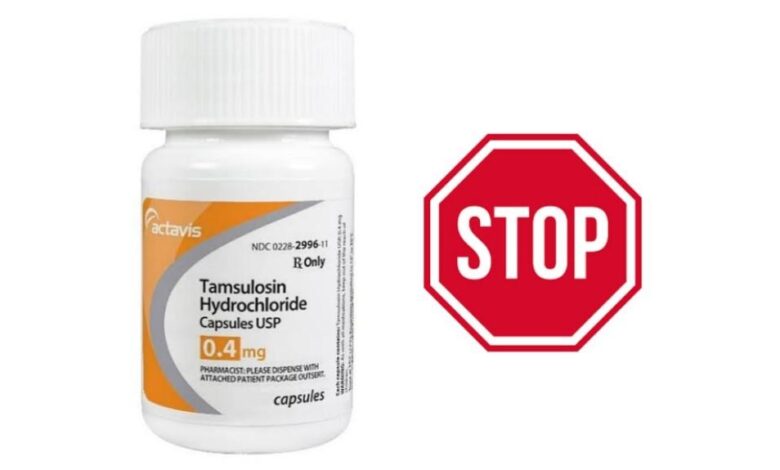How To Stop Taking Tamsulosin Safely

Medication compliance or adherence refers to the degree or extent of conformity to the recommendations about day-to-day treatment by the provider with respect to the timing, dosage, and frequency. It may be defined as the extent to which a patient acts in accordance with the prescribed interval, and dose of a dosing regimen.
Adherence to therapies is a primary determinant of treatment success. Failure to adhere to the prescribed regimen is a serious problem that not only affects the patient but also the health care system. Medication non-adherence in patients leads to substantial worsening of disease, death, and increased health care costs.
What is Tamsulosin (Flomax)?
Tamsulosin (Flomax) is a medication used in men to treat the symptoms of an enlarged prostate (benign prostatic hyperplasia or BPH) which include difficulty urinating (hesitation, dribbling, weak stream, and incomplete bladder emptying), painful urination, and urinary frequency and urgency.
Benign prostatic hyperplasia is the most common prostate problem for men older than age 50. In 2010, as many as 14 million men in the United States had lower urinary tract symptoms suggestive of benign prostatic hyperplasia. Although benign prostatic hyperplasia rarely causes symptoms before age 40, the occurrence and symptoms increase with age. Benign prostatic hyperplasia affects about 50 percent of men between the ages of 51 and 60 and up to 90 percent of men older than 80.
Tamsulosin is in a class of medications called alpha-blockers. It works by relaxing the muscles in the prostate and bladder so that urine can flow easily.
How should I take Tamsulosin?
Tamsulosin comes as a capsule to take by mouth. It is usually taken once a day. Take tamsulosin 30 minutes after the same meal each day. Follow the directions on your prescription label carefully, and ask your doctor or pharmacist to explain any part you do not understand. Take tamsulosin exactly as directed. Do not take more or less of it or take it more often than prescribed by your doctor.
Swallow the tamsulosin capsules whole; do not split, chew, crush, or open them.
Your doctor will probably start you on a low dose of tamsulosin and may increase your dose after 2 to 4 weeks.
Tamsulosin may help control your condition, but it will not cure it. Continue to take tamsulosin even if you feel well. Do not stop taking tamsulosin without talking to your doctor.
What happens if you stop taking tamsulosin?
If you stop taking tamsulosin, your BPH symptoms will worsen. If you stop taking this drug for several days, talk to your doctor before starting again. If you miss doses or don’t take the drug on schedule: Your medication may not work as well or may stop working completely. If you eventually stop taking tamsulosin, it will take 2 to 3 days for it to be completely out of your body.
How to stop taking tamsulosin safely
If you are experiencing side effects that make it difficult for you to take tamsulosin on schedule, discuss with your doctor about stopping tamsulosin.
Your doctor can recommend other possible alternatives. There are several alternatives to tamsulosin, for example, studies indicate that Silodosin a similar medication with a more rapid onset of action is an option. Silodosin also improves the quality of life in patients with LUTS due to BPH and objectively improves the maximum flow rate. However, silodosin has more adverse events when compared to tamsulosin and alfuzosin.
Always remember that the better BPH medication will be the one that works best for you. Other factors may play a role in choosing a BPH medication, such as cost, side effects, and other medications you may be taking.
You may find useful information on Can You Take Tamsulosin and Alcohol?





